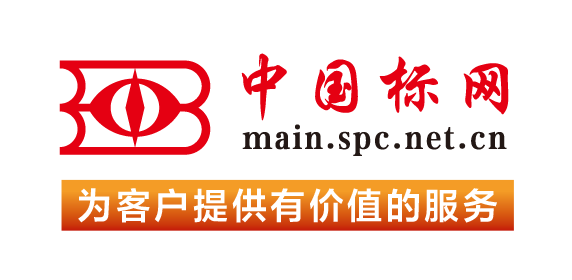【国外标准】 Standard Guide for Selection and Documentation of Existing Wells for Use in Environmental Site Characterization and Monitoring
本网站 发布时间:
2024-02-28
开通会员免费在线看70000余条国内标准,赠送文本下载次数,单本最低仅合13.3元!还可享标准出版进度查询、定制跟踪推送、标准查新等超多特权!
查看详情>>
适用范围:
4.1 This guide describes a general approach for the use of existing wells in environmental investigations with a primary focus on the subsurface and major factors affecting the surface and subsurface environment.4.2 Existing wells represent a valuable source of information for subsurface environmental investigations. Specific uses of existing wells include:4.2.1 Well driller logs provide information on subsurface lithology and major water-bearing units in an area. Existing wells can also offer access for downhole geophysical logging for stratigraphic and aquifer interpretations. Examples include natural gamma logs in cased wells and an entire suite of methods in uncased bedrock wells (see Guide D5753). This information can assist in developing the preliminary conceptual model of the site.4.2.2 Well tests using existing wells may provide information on the hydrologic characteristics of an aquifer.4.2.3 Monitoring of water levels in existing wells, provided that they are cased in the aquifer of interest, allow development of potentiometric maps and interpretations of groundwater flow directions and gradients.4.2.4 Existing wells are the primary means by which regional drinking water quality is evaluated and monitored.4.2.5 Existing wells may assist in the mapping of contaminant plumes, and in ongoing monitoring of groundwater quality changes at the site-specific level.4.3 Data from existing wells should only be used when characteristics of the well have been sufficiently documented to determine that they satisfy criteria for the purpose for which the data are to be used.1.1 This guide covers the use of existing wells for environmental site characterization and monitoring. It covers the following major topics: criteria for determining the suitability of existing wells for hydrogeologic characterization and groundwater quality monitoring, types of data needed to document the suitability of an existing well, and the relative advantages and disadvantages of existing large- and small-capacity wells.1.2 This guide should be used in conjunction with Guide D5730, that provides a general approach for environmental site investigations.1.3 This guide does not specifically address design and construction of new monitoring or supply wells. Refer to Practices D5092 and D5787.1.4 This guide does not specifically address groundwater sampling procedures. Refer to Guide D5903.1.5 The values stated in SI units are to be regarded as standard. No other units of measurement are included in this standard.1.6 This standard does not purport to address all of the safety concerns, if any, associated with its use. It is the responsibility of the user of this standard to establish appropriate safety and health practices and determine the applicability of regulatory limitations prior to use.1.7 This guide offers an organized collection of information or a series of options and does not recommend a specific course of action. This guide cannot replace education or experience and should be used in conjunction with professional judgment. Not all aspects of this guide may be applicable in all circumstances. This guide is not intended to represent or replace the standard of care by which the adequacy of a given professional service must be judged, nor should this guide be applied without consideration of a project's many unique aspects. The word “Standard” in the title of this document means only that the document has been approved through the ASTM consensus process.
标准号:
ASTM D5980-16
标准名称:
Standard Guide for Selection and Documentation of Existing Wells for Use in Environmental Site Characterization and Monitoring
英文名称:
Standard Guide for Selection and Documentation of Existing Wells for Use in Environmental Site Characterization and Monitoring标准状态:
Active-
发布日期:
-
实施日期:
出版语种:
- 推荐标准
- ASTM 51401-21 Standard Practice for Use of a Dichromate Dosimetry System
- ASTM 51956-21 Standard Practice for Use of a Thermoluminescence-Dosimetry System (TLD System) for Radiation Processing
- ASTM A1010/A1010M-24 Standard Specification for Higher-Strength Martensitic Stainless Steel Plate, Sheet, and Strip
- ASTM A1016/A1016M-24 Standard Specification for General Requirements for Ferritic Alloy Steel, Austenitic Alloy Steel, and Stainless Steel Tubes
- ASTM A105/A105M-24 Standard Specification for Carbon Steel Forgings for Piping Applications
- ASTM A1064/A1064M-24 Standard Specification for Carbon-Steel Wire and Welded Wire Reinforcement, Plain and Deformed, for Concrete
- ASTM A108-24 Standard Specification for Steel Bar, Carbon and Alloy, Cold-Finished
- ASTM A1080/A1080M-24 Standard Practice for Hot Isostatic Pressing of Steel, Stainless Steel, and Related Alloy Castings
- ASTM A1090/A1090M-19(2024) Standard Specification for Forged Rings and Hollows for Use as Base Plates in Power Transmission Structures
- ASTM A1115/A1115M-24 Standard Practice for Construction of Mechanically Stabilized Earth Walls with Inextensible Soil Reinforcement
- ASTM A1128-24 Standard Specification for Stainless Steel Shielded, Rubber Gasketed Couplings Having an Integral Restraint Feature for Joining Hubless Cast Iron Soil Pipes and Fittings Where External Restraint Is Required
- ASTM A179/A179M-24 Standard Specification for Seamless Cold-Drawn Low-Carbon Steel Heat-Exchanger and Condenser Tubes
- ASTM A234/A234M-24 Standard Specification for Piping Fittings of Wrought Carbon Steel and Alloy Steel for Moderate and High Temperature Service
- ASTM A242/A242M-24 Standard Specification for High-Strength Low-Alloy Structural Steel
- ASTM A249/A249M-24a Standard Specification for Welded Austenitic Steel Boiler, Superheater, Heat-Exchanger, and Condenser Tubes
 我的标准
我的标准 购物车
购物车 400-168-0010
400-168-0010














